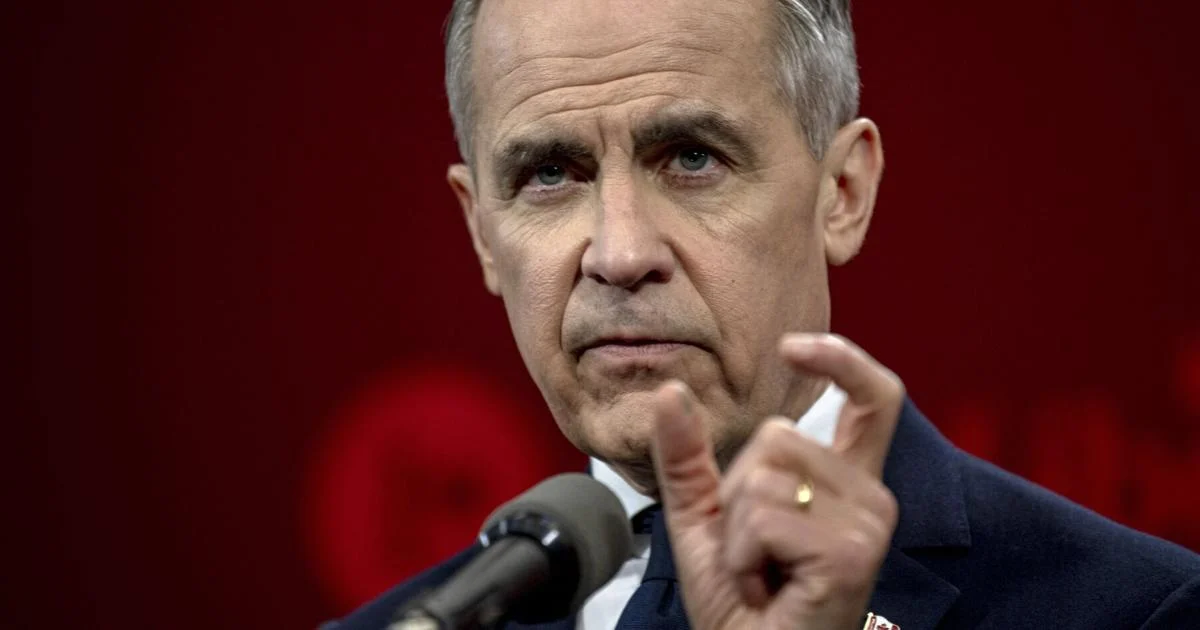‘Mark Carney : Father of Housing Crisis’
According to expert analysis hereafter, Mark Carney’s Rate Cuts Started the Problem: He lit the match, and others poured gasoline.
Analogy: Carney gave Canada painkillers for a broken leg (2008 crisis). Later leaders never fixed the leg, just kept upping the dose (low rates + debt), and resulted in the dire Housing Crisis we have in Canada today.
Low Interest Rates The Major Factor Causing Housing Unaffordability Crisis
While the Housing Crisis in Canada is the result of multiple interconnected factors, Low Interest Rates is a Major Factor that turbocharged the crisis and contributing to today’s Unaffordable Housing, whereby rising prices and increasing costs making homeownership and even renting increasingly difficult for many, especially in major urban centers.
- Cheap borrowing costs (2020–2022) led to a surge in demand, pushing prices up.
- Investors and homebuyers took on larger mortgages, inflating prices.
- Low Interest Rate was a major accelerant (2020–2022). Even with higher rates now, prices remain high due to chronic supply shortages and worsened by investor speculation.
Deep Dive: How Low Interest Rates Fueled Canada’s Housing Crisis
Low interest rates (especially near 0% in 2020–2022) were a massive accelerant in Canada’s housing crisis. While not the only cause, they supercharged demand, speculation, and price growth in ways that still impact affordability today. Here’s how:
1. How Low Rates Directly Drove Up Prices
A. Mortgage Affordability Illusion
- When the Bank of Canada cut rates to 0.25% in 2020, monthly mortgage payments dropped dramatically.
- Example:
- 2019: A $500,000 mortgage 2,245/month.
- 2021: Same mortgage at 1.5% = ~$1,995/month.
- Buyers could borrow more for the same payment, bidding up prices.
B. Demand Surge (FOMO Buying)
- Cheap debt triggered a frenzy—buyers feared missing out (FOMO).
- Result: Prices soared 50%+ in 2 years (2020–2022).
C. Investor Speculation Boom
- Investors piled in because:
- Debt was almost free (negative real rates after inflation).
- Rental yields looked good (with low borrowing costs).
- Result: Investors bought ~30% of homes in some markets (Toronto, Vancouver), squeezing out first-time buyers.
2. The Aftermath: Even Higher Rates Didn’t Fully Reverse the Damage
A. Prices Didn’t Crash (Just Cooled Slightly)
- Many expected a 2008-style crash when rates rose (2022–2024).
- Instead, prices only dipped ~15% (early 2023) then rebounded.
- Why?
- Supply was still too low (people held onto homes).
- Investors didn’t sell (many could absorb higher rates).
- Immigration kept demand high.
B. Mortgage Stress Test Wasn’t Strong Enough
- Even with the stress test (qualify at +2%), people borrowed at ultra-low rates, leaving them vulnerable when rates jumped.
- Result: Many are now mortgage prisoners (can’t afford to renew at 5–6%).
3. Low Rates Also Indirectly Worsened the Crisis
A. Cheap Money Fueled Speculative Construction
- Developers focused on luxury condos (higher profits) rather than affordable homes.
- Result: More investor-owned units, fewer family homes.
B. Government Debt Became “Cheap,” Delaying Action
- Low rates let governments borrow easily, reducing urgency to fix housing supply.
- Example: Instead of zoning reforms, cities relied on demand-side fixes (like foreign buyer bans), which failed.
C. Asset Inflation (Housing Became the Only Game in Town)
- With savings accounts paying 0%, Canadians piled into real estate as the only way to grow wealth.
- Result: A self-reinforcing cycle where housing became an investment, not just shelter.
Key Takeaway:
Low rates turbocharged the crisis, it was the Gasoline on the Fire. Without low rates, prices wouldn’t have surged as fast or as high, but Canada’s real problem is still supply. Without supply shortages, prices would have corrected more when rates rose. Even at 5% rates, homes are unaffordable because not enough inventory in existence.
Mark Carney’s Contribution To Canada’s Housing Crisis
During Mark Carney’s tenure as Governor of the Bank of Canada (2008–2013), interest rates were lowered dramatically in response to the 2008 Global Financial Crisis (GFC) and its aftermath.
Here’s a breakdown of how and why rates were cut, along with the key impacts:
1. The Context: The 2008 Financial Crisis
- The collapse of Lehman Brothers (Sept. 2008) triggered a global credit crunch.
- Canada’s economy, though more stable than the U.S., faced falling commodity prices, a stock market crash, and recession risks.
- Carney’s mandate: Prevent a deep recession, stabilize banks, and keep inflation near the 2% target.
2. The Rate Cuts: Aggressive Easing (2008–2009)
Carney slashed the overnight rate (the BoC’s key policy rate) in a series of moves:
| Date | Rate Change | New Rate | Reason |
|---|---|---|---|
| Oct. 2008 | -0.25% | 2.25% | Initial response to global panic. |
| Dec. 2008 | -0.75% | 1.50% | Deepening crisis; U.S. Fed cut to near-zero. |
| Jan. 2009 | -0.50% | 1.00% | Canada officially in recession; emergency cut. |
| Apr. 2009 | -0.25% | 0.25% | “Lower bound” reached—lowest ever at the time. |
Why 0.25%?
- The BoC believed this was the effective lower bound (couldn’t go negative yet).
- Commitment: Rates would stay low until mid-2010 (later extended).
3. Unconventional Measures (Beyond Just Rate Cuts)
Since rates couldn’t go lower, Carney introduced extraordinary policies:
- Quantitative Easing (QE) Lite
- The BoC bought $3 billion in mortgages from banks to keep credit flowing.
- Unlike the U.S., Canada avoided full QE because banks were healthier.
- Forward Guidance
- Carney explicitly promised rates would stay low until at least mid-2010 (later extended to 2013).
- This reassured markets and kept borrowing cheap.
- Pressure on Banks to Maintain Lending
- Unlike the U.S., Canadian banks didn’t stop mortgage lending.
- This helped housing rebound quickly (too quickly, some argue).
4. The Impact on Housing
- Mortgage rates plunged: 5-year fixed rates fell to ~3.5% (from ~6% pre-crisis).
- Housing boom began: Prices rose ~20% from 2009–2012, especially in Toronto/Vancouver.
- Debt surge: Household debt-to-income ratios spiked (from ~140% to ~160%).
Did Carney Intend to Boost Housing?
- While the goal was to save the economy, Carney has failed to anticipate cheap money unintentionally fueled real estate.
5. Rate Hikes (2010–2011) & Pause
- 2010–2011: Carney raised rates 3 times (to 1.00%) as recovery seemed strong.
- 2011–2013: Eurozone debt crisis hit, forcing Carney to pause hikes.
- By 2013 (when Carney left for the Bank of England), rates were still just 1.00%.
6. Legacy: Did Low Rates Plant the Seeds of Today’s Crisis?
- Yes, albeit indirectly:
- Ultra-low rates (2009–2013) trained Canadians to expect cheap debt.
- Investors saw housing as a can’t-lose bet, fueling speculation.
- When rates fell again in 2020, the market exploded even more.
Unfortunately, Carney’s successors (Poloz, Macklem) kept rates low for far too long.
Key Takeaway
Carney’s rate cuts saved Canada from a worse recession but also kickstarted the housing debt boom that later turned into today’s affordability crisis, whereby later decisions (and inaction) by governments, regulators, and his successors turned a recovery measure into a long-term crisis.
Critics Fairly Argue Carney Missed Opportunity For Tougher Oversight
- Carney normalized “free money” too soon: Kept rates at 1% until 2013 despite housing heating up.
- Didn’t push harder for supply-side fixes: The BoC has no power over zoning or taxes, but he could have publicly pressured governments (like the Fed does in the U.S.).
- Legacy of cheap debt: His policies conditioned Canadians to expect low rates forever, making the 2020–2021 bubble worse.
Carney’s bigger “mistake” was not ensuring his warnings were followed. Later leaders made things worse:
- Stephen Poloz (2013–2020): Cut rates again in 2015 and 2020, ignored housing inflation.
- Tiff Macklem (2020–present): Dropped rates to 0.25% and bought bonds, fueling the 2021–2022 mania.
- Federal/provincial governments: Blocked housing supply while ramping up immigration.
→ Carney set a precedent, but others recklessly repeated it.
- Carney failed to exhibit long-term foresight and underestimated how addicted Canada would become to cheap debt.
- The problem is exacerbated by those who kept rates too low for too long.
Other Culprits After Carney Left (2013–Present)
A. Stephen Poloz (2013–2020): Keeping Rates Too Low for Too Long
- Held rates at 1% until 2017, then hiked too slowly (even as housing soared).
- Let CMHC insure risky mortgages, fueling speculation.
- 2015–2020: Toronto/Vancouver prices doubled — yet Poloz cut rates again in 2020 (COVID).
B. Justin Trudeau’s Government (2015–Present): Demand Over Supply
- Ramped up immigration without matching housing starts.
- Failed to tax speculation effectively (empty homes tax was weak).
- Local zoning delays: Cities blocked density, worsening shortages.
C. Tiff Macklem (2020–Present): Pandemic Money Printing
- Dropped rates to 0.25% and bought $400B in bonds, supercharging prices.
- Waited too long to hike (2022), letting inflation and bubbles grow.
Final Verdict: Carney’s Rate Cuts Started the Problem, But Others Made It Worse
→ Carney lit the match, and others poured gasoline.
Analogy: Carney gave Canada painkillers for a broken leg (2008 crisis). Later leaders never fixed the leg, just kept upping the dose (low rates + debt).
As a result, real estate speculators are addicted and there is no solution in sight.

Alternative Policies Mark Carney Could Have Pursued to Mitigate Canada’s Housing Crisis
Mark Carney has failed to anticipate and to pursue alternative or supplementary policies could have reduced the long-term housing market distortions.
Here’s a deeper dive into what else could have been done:-
1. Earlier Macroprudential Regulations (2010–2012)
Instead of relying solely on low rates, Carney could have pushed for stricter mortgage rules sooner:
A. Tighter Stress Testing (Pre-2012)
- Problem: Ultra-low rates (2009–2012) allowed borrowers to take on dangerous debt levels.
- Solution: Introduce mandatory stress tests at +2–3% rates as early as 2010 (not 2018).
- Impact: Would have slowed mortgage growth and speculative buying.
B. Lower Maximum Amortization Periods (Pre-2012)
- Problem: In 2008, Canada allowed 40-year mortgages, increasing debt loads.
- Solution: Reduce max amortization to 25 years by 2010 (instead of waiting until 2012).
- Impact: Fewer overleveraged buyers, less price inflation.
C. Higher Down Payment Requirements for Investors
- Problem: Investors exploited cheap debt to buy multiple properties.
- Solution: Require 20–30% down payments on investment properties (as Australia later did).
- Impact: Reduced speculative demand.
2. Coordination with Fiscal Policy (Housing Supply Measures)
The Bank of Canada can’t control zoning, but Carney could have publicly pressured governments:
A. Advocate for Federal Housing Investment (2009–2013)
- Problem: Post-2008, Canada cut social housing funding (unlike the U.S., which boosted it).
- Solution: Push for a national housing strategy earlier (instead of waiting until 2017).
- Impact: More affordable supply, less pressure on prices.
B. Pressure Municipalities to Speed Up Permits
- Problem: NIMBYism and red tape slowed construction.
- Solution: Use BoC’s influence to demand provincial pre-emption of local zoning delays.
- Impact: Faster supply response to demand.
3. Earlier Rate Normalization (2011–2013)
Carney briefly hiked rates in 2010–2011 but paused due to Eurozone fears. Alternative approach:
A. Gradual, Steady Hikes (2011–2013)
- Problem: Keeping rates at 1% until 2013 reinforced debt dependency.
- Solution: Continue slow, predictable hikes (e.g., 0.25% every 6 months).
- Impact: Cooled housing without crashing the economy.
B. Forward Guidance with Conditions
- Problem: Promising low rates until 2013 encouraged reckless borrowing.
- Solution: Tie rate guidance to debt levels or housing metrics (e.g., “Rates rise if household debt hits 150% of income”).
- Impact: More market discipline.
4. Targeted Credit Controls (Like Other Countries)
Instead of just cutting rates, Carney could have restricted risky lending:
A. Debt-to-Income (DTI) Caps (Like New Zealand)
- Problem: Canadians borrowed 5–6x their incomes, fueling bubbles.
- Solution: Impose DTI limits (e.g., max 4.5x income) for mortgages.
- Impact: Curbed excessive borrowing.
B. Banning Interest-Only Mortgages (Like the UK in 2014)
- Problem: Some lenders offered riskier loan structures.
- Solution: Ban or restrict interest-only and variable-rate loans.
- Impact: Fewer payment shocks later.
5. Stronger Warnings to Successors & Governments
Carney did warn about housing risks, but he could have been more forceful:
A. Publicly Criticize Loose Mortgage Standards (2012–2013)
- Example: Like the Fed’s Janet Yellen, who openly called out subprime risks pre-2008.
- Impact: Might have pressured OSFI (bank regulator) to act sooner.
B. Advocate for Investor Taxes (Like Foreign Buyer Bans)
- Example: Pushed for higher capital gains taxes on investment properties while at the BoC.
- Impact: Reduced speculative demand.
Conclusion: Could Carney Have Prevented Today’s Crisis?
- While not entirely as housing was a multi-government failure.
- But earlier macroprudential rules, gradual rate hikes, and supply-side advocacy could have softened the bubble, which Carney failed to do so.
- Biggest missed opportunity? Not ensuring his successors (Poloz, Macklem) avoided repeating low-rate mistakes.
Final Thought: With more foresight, Carney could have left Canada in a less vulnerable position.

What’s Carney’s solution now?
Mark Carney wants us to believe Housing Crisis can be resolved with some ridiculous ‘Kiddie Voodoo House Designs’… See the debut of his “Building Canada Strong” House Designs for yourself

Canada’s Widespread Homelessness Due To Housing Crisis










Whaddaya Say?